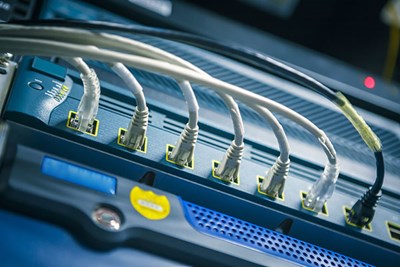 Image by Adrien Bisson
Image by Adrien Bisson
01/05/2021
With millions of people working and learning remotely during the pandemic, internet traffic has seen a significant increase, creating high demand and major strain on the country’s IT infrastructure and communications networks.
“Today’s biggest challenges include deployment and maintenance of remote working and learning platforms, the availability of desktop computers and mobile devices, broadband access to homes and businesses, provisioning of network capacity and bandwidth, and network stability and resilience,” says Computer Science Prof. Benyuan Liu of the UML Center of Biomedical and Health Research in Data Sciences.
“Recent network measurement studies have shown that despite the traffic surge associated with lockdowns and remote working and learning – such as web conferencing and virtual private networks – the good news is that the internet infrastructure is still able to handle the increased volume so far,” says Liu.
He says in the wake of the pandemic, service providers will need to continually monitor infrastructure performance and capacity needs, identify potential issues and impacts, and design a flexible and robust solution for today’s highly dynamic demand for bandwidth.
On top of this, Liu says there has also been an increase in cyberattacks associated with the topic of COVID-19 and the wide use of teleconferencing at work.
“For example, COVID-19-themed scams and phishing emails, Zoom bombings and ransomware attacks are on the rise,” notes Liu. “If not addressed appropriately, these can add to the already-heavy burden of mental stress due to the coronavirus and working from home.”




